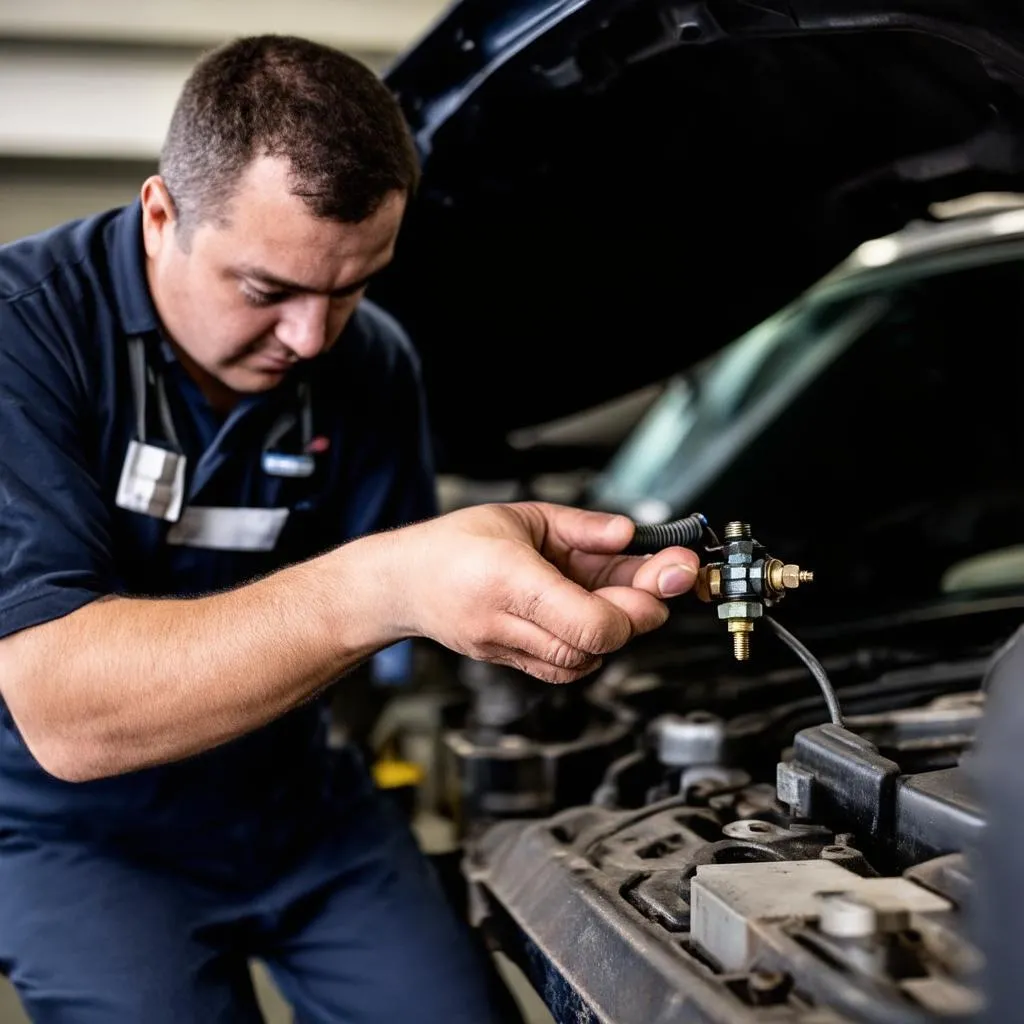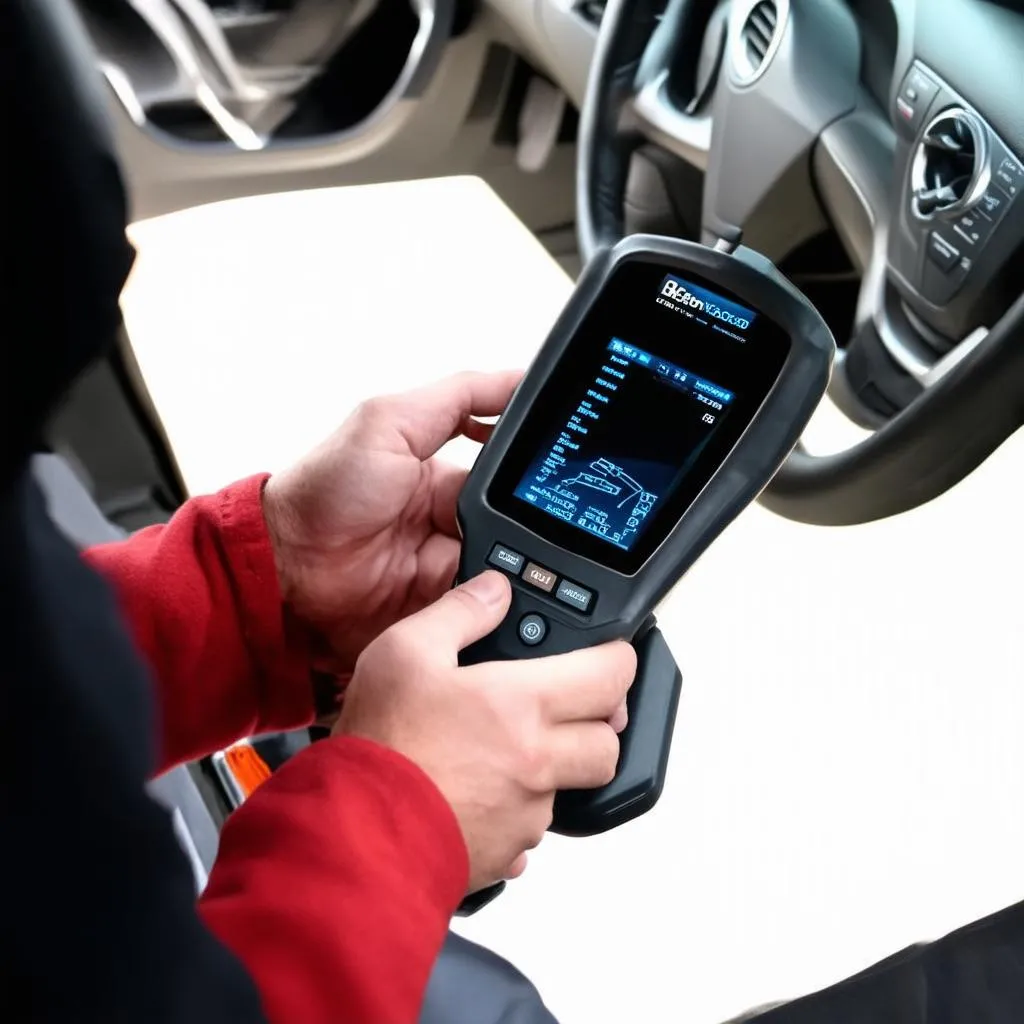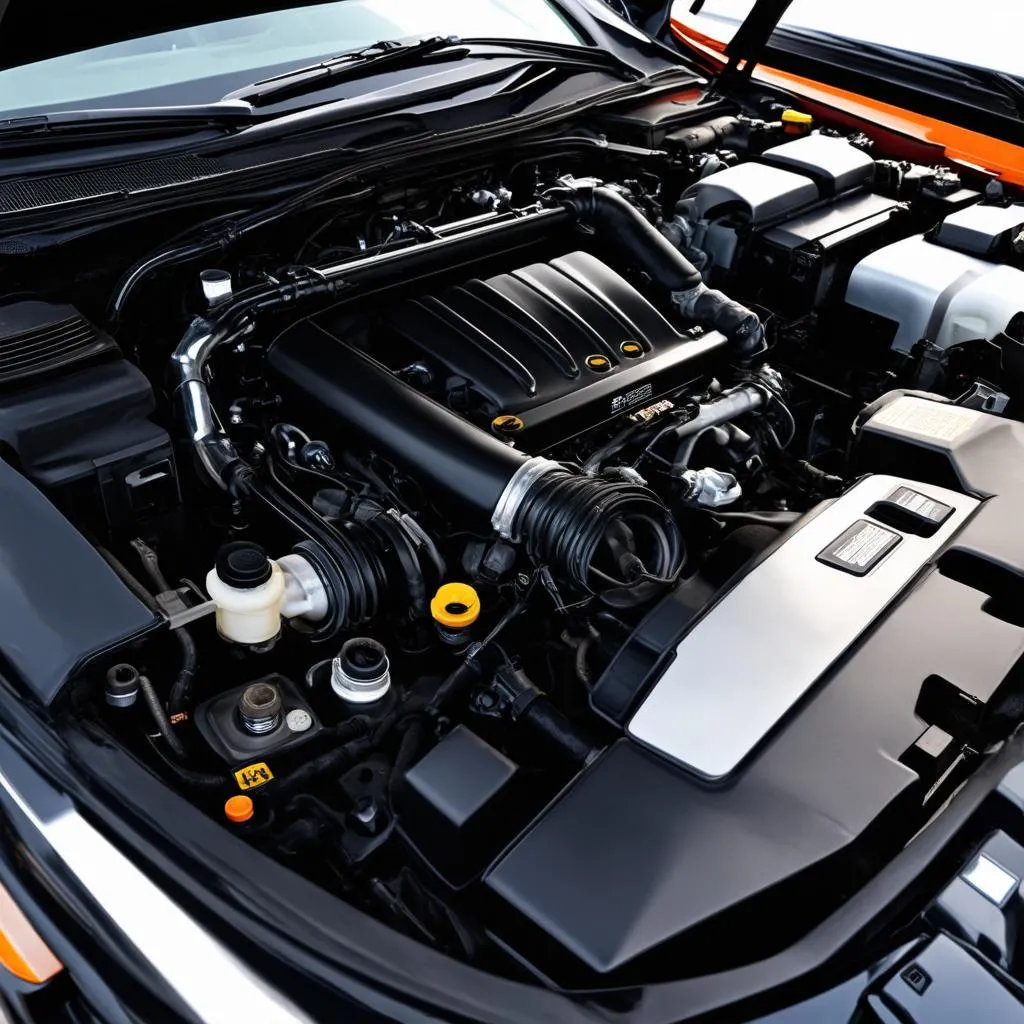Ever felt like your car was whispering secrets in a language you didn’t understand? That’s often the feeling when a “Check Engine” light flashes on the dashboard, leaving you wondering what went wrong. One such mysterious message is the Obd Code P2197, a code that often throws car owners into a state of confusion and anxiety. In this article, we’ll dive deep into the meaning of P2197, decipher its mysteries, and equip you with the knowledge to address this issue.
Understanding the Code P2197: A Symphony of Sensors
Imagine your car’s engine as an orchestra. Each sensor is a musician, playing a vital role in keeping the engine running smoothly. When one instrument goes out of tune, the entire orchestra falters, and that’s where P2197 comes in. This code indicates that the car’s Oxygen sensor (O2 sensor) is detecting an issue with the fuel-air mixture entering the engine. It essentially means that the engine’s oxygen sensor is detecting too little oxygen in the exhaust gases, suggesting a problem with the fuel mixture.
The Deeper Meaning: A Balance of Air and Fuel
Think of a perfect balance of air and fuel as a delicate dance between two partners. The engine needs the right amount of both to achieve optimal combustion, which is like a harmonious flow in the dance. When the air-fuel mixture is too rich, it’s like the partners are stepping on each other’s toes, leading to problems. The oxygen sensor is the watchful eye, ensuring the harmony of this delicate balance.
Common Causes: Detecting the Dissonance
Now, let’s identify the instruments that might be causing this disharmony:
1. Faulty Oxygen Sensor: The most common culprit is a malfunctioning O2 sensor. Just like a microphone can distort sound, a faulty sensor can misinterpret the air-fuel mixture, leading to an incorrect reading. This could be due to the sensor failing completely, becoming clogged, or losing its ability to detect the appropriate oxygen levels.
2. Leaky Fuel Injector: Imagine a leaky hose in your garden watering system, wasting water. A leaky fuel injector can create a similar problem, causing excess fuel to enter the engine, thus disrupting the air-fuel ratio.
3. Vacuum Leak: A vacuum leak is like a hole in a drum, preventing it from creating a full, rich sound. In your engine, a vacuum leak can allow air to enter the system unnecessarily, disrupting the air-fuel balance.
4. Faulty Mass Airflow Sensor (MAF): The MAF sensor measures the amount of air entering the engine, making it crucial for accurate fuel calculations. A malfunctioning MAF sensor could be sending incorrect readings, leading to an overly rich mixture.
5. Catalytic Converter Issue: Imagine a silencer in a music studio that’s malfunctioning and amplifying certain frequencies. The catalytic converter plays a similar role, cleaning up exhaust gases and reducing harmful emissions. A faulty catalytic converter can impact the oxygen levels in the exhaust, leading to P2197.
Solving the Symphony: Addressing the Dissonance
Now, let’s fix those instruments causing the disharmony:
-
Replace the Oxygen Sensor: If the O2 sensor is the culprit, it’s time for a replacement. This is a common fix, and a mechanic can replace it quickly.
-
Inspect Fuel Injectors: A mechanic will use a specialized tool to test the fuel injectors for leaks and ensure they’re delivering fuel accurately. Leaky injectors often need to be replaced.
-
Check for Vacuum Leaks: A mechanic will carefully inspect the engine for any signs of vacuum leaks using a specialized tool. Repairing any leaks is essential for restoring the correct air-fuel mixture.
-
Replace the Mass Airflow Sensor: If the MAF sensor is faulty, replacing it will ensure accurate air readings and help restore the optimal air-fuel balance.
-
Inspect the Catalytic Converter: A mechanic will inspect the catalytic converter for signs of damage or blockage. A clogged or damaged converter might need replacement.
The P2197 and Your Wallet: A Balance of Cost and Solutions
Repairing P2197 can range in cost depending on the cause. Replacing a single oxygen sensor is often the least expensive solution, while replacing a catalytic converter can be more expensive.
The P2197 and Car Brands: A Global Concern
P2197 is a common issue across various car brands, affecting both American and European makes like Ford, Honda, Toyota, BMW, Mercedes-Benz, and Audi.
FAQs: Addressing Common Questions
Q: What happens if I ignore the P2197 code?
Ignoring the P2197 code can lead to decreased fuel efficiency, increased emissions, and potentially even engine damage.
Q: Can I fix the P2197 code myself?
While some repairs, like replacing the oxygen sensor, are relatively straightforward, it’s generally recommended to consult a professional mechanic for diagnosis and repair, especially if you’re unsure of the cause.
Q: Is P2197 a serious issue?
P2197 can be serious if left unaddressed, potentially leading to engine problems. However, with timely diagnosis and repair, it can be resolved effectively.
Q: What else can I do?
You can check out other informative articles on our website techcarusa.com related to car maintenance, repairs, and diagnostics.
Q: Can I reset the P2197 code myself?
You can try resetting the code with a code reader or OBD2 scanner, but keep in mind that this only clears the light, not the underlying problem.
A Final Note: Keeping Your Engine in Tune
Remember, your car is a complex machine that needs regular attention. Just like a musical instrument, it requires maintenance to stay in tune. Addressing the P2197 code promptly is crucial for keeping your car running smoothly and avoiding potential future problems.
Contact us: If you’re facing this code or any other car repair issues, don’t hesitate to contact our team of experts at techcarusa.com. We’re here to help you get back on the road with confidence.
 Oxygen Sensor Repair
Oxygen Sensor Repair
 OBD2 Scanner
OBD2 Scanner
 Car Engine
Car Engine